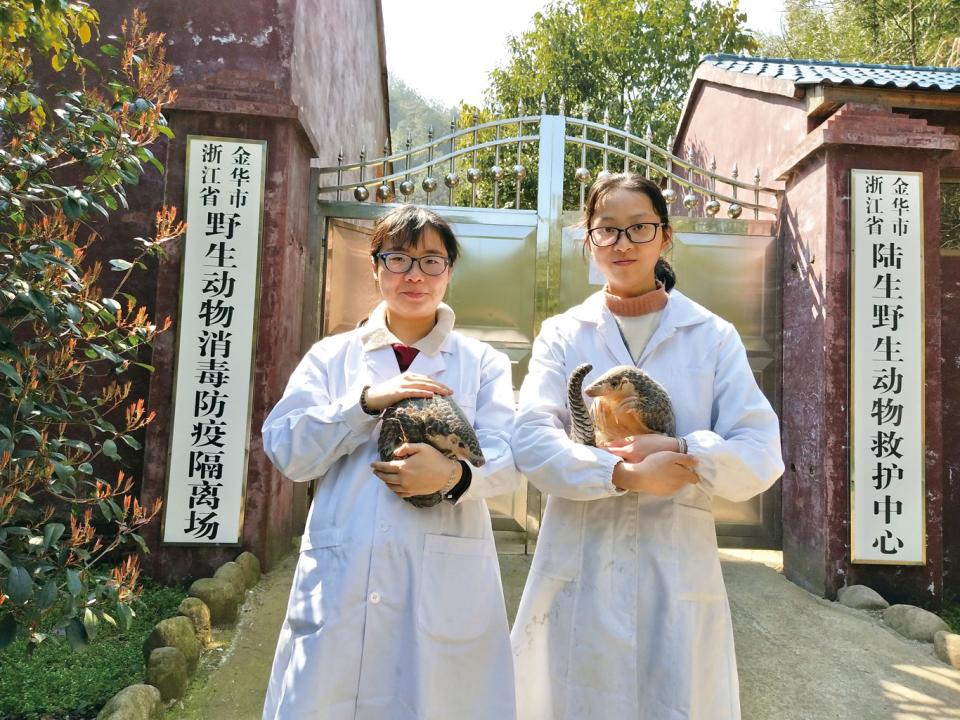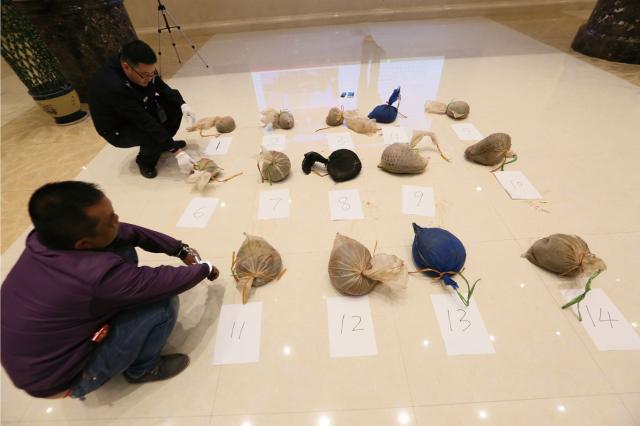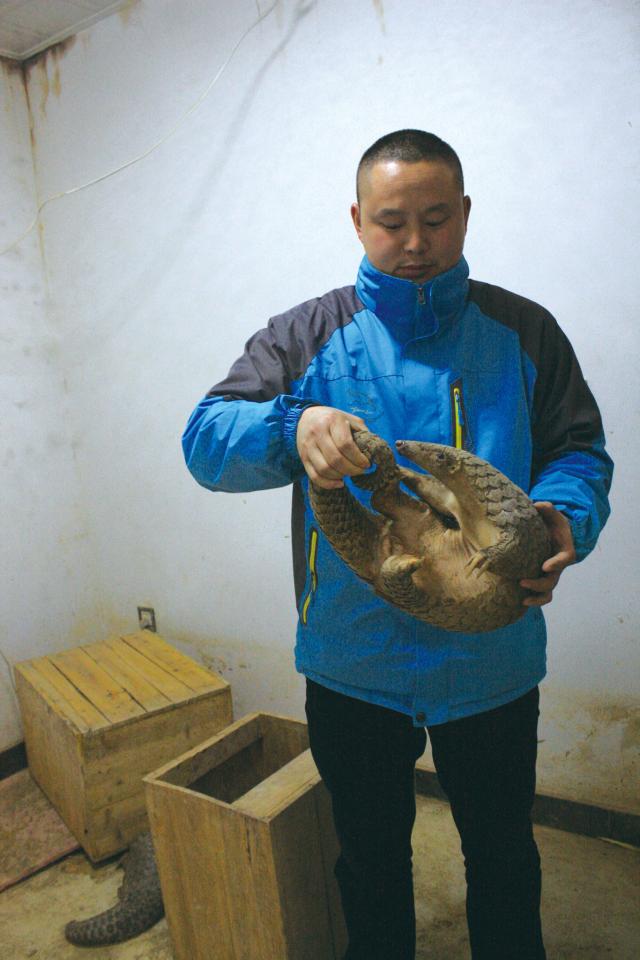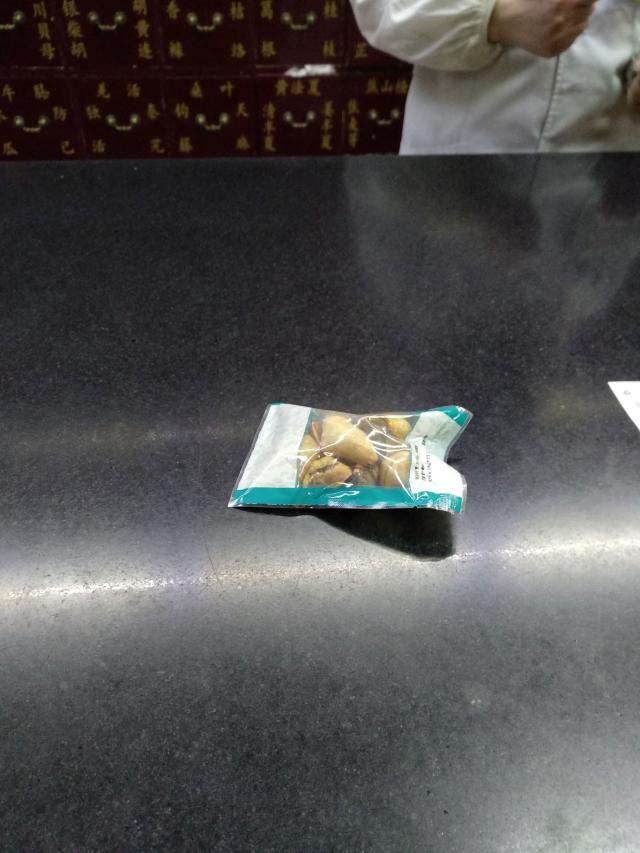An updated version of China’s Wildlife Protection Law in 2017 clearly prohibits the consumption of pangolin meat and sale of illegally sourced scales. There is a constant battle by wildlife authorities to crack down on the trade in pangolins for their scales and meat.
In late 2018, a year-long investigation resulted in police from Central China’s Hunan Province identifying a large pangolin trafficking ring involving over 200 suspects. According to the Hunan Provincial Forestry Bureau, “The pangolins were trafficked into Guangxi from overseas, and then sold to suspects in Guangdong Province, from where they were distributed to other parts of China.” Arrests were made in six southern provinces and regions, including Hunan, Guangdong, Fujian, Jiangxi, Hainan and Guangxi. According to China’s Wildlife Protection Law, people involved in the trade in endangered wild animals face more than 10 years in prison, plus fines.
As China cracks down on the illegal trafficking of tons of pangolin meat and scales each year, surviving pangolins are sent to rescue centers. However, despite decades of efforts, pangolins do not adapt well to life in captivity.
“Captive breeding of pangolins started as early as the 1980s in China, yet without significant success. I started my pangolin breeding research in 2010, and they only survive an average of two to three years in human care,” a domestic pangolin expert who spoke on condition of anonymity told NewsChina during a telephone interview. In the wild, a pangolin can live up to 20 years.
Although a proper environment with artificial food allows rescued pangolins to survive, a so-far unidentified gastrointestinal disease or pneumonia disease often results in their death within a few months or at most a few years. “So far there are no successful conservation breeding programs for pangolins, and so we need further scientific research for the purpose of pangolin species conservation,” the expert said.
Due to the high mortality rate, successful captive breeding remains elusive. At the Jinhua Wildlife Rescue Center in Zhejiang Province, former keeper Xiao Chen said she really missed two pangolins, Rou Rou (meaty) and Tuan Tuan (round) she had taken care of for several months. “When I first saw them in December 2017, they would eat a prepared diet by themselves,” Xiao said. “They were very timid and would stop and sniff when you’d approach them.” She adored the creatures, and when the weather was warm, she and the other staff would take them to forage around in the nearby clumps of bamboo. “They liked to dig in the soil, they would dig for a while before coming up and looking at you. I didn’t even mind getting bitten by mosquitoes there because I wanted them to enjoy nature as long as they wanted.”
But in April 2018, the two pangolins suddenly fell ill and died. Xiao Chen cried for two days and left the job with a broken heart. “Although we didn’t know why they died, I still felt so responsible for not being capable or professional enough. Otherwise I might have saved their lives,” said Xiao.
A written record from the rescue center indicates that the two pangolins, both found by local residents, died 240 days and 206 days after their rescue. Since 2017, forestry authorities have sent all 12 pangolins found in Zhejiang Province to Jinhua for rescue and breeding.
But in mid-March, when NewsChina arrived at the rescue center located inside Jinhua Zoo, there were only two pangolins still alive, one wounded Chinese pangolin rescued in July 2018 and a Sunda pangolin sent over in late January. They are kept in a small house with air conditioning and heating to keep a stable temperature of around 25 C. Wang Pei, manager of the rescue center, prepares a diet of dried ants, bee larvae and other protein and vitamins.
“At first, I tried to feed them their familiar diet of ants and termites so they could acclimatize to the new environment, and then I slowly added other ingredients,” Wang said. With careful nursing, a wound on the Chinese pangolin’s rear leg has recovered. Meng Haifeng, curator of Jinhua Zoo said that they had found suppliers of raw termites.
“We are learning gradually how to take care of them. Each rescued pangolin has a unique temperament, so you need to know that well,” Wang said, admitting the survival rate of rescued wounded pangolins is low during the two years he’s been trying to rear them. But rescued Chinese pangolins normally live longer than Sunda pangolins due to their different health conditions. “Most recused Sunda pangolin were force-fed with water and huge amounts of flour to increase their weight. Many of the rescued Sunda pangolins die soon after they get to the center,” Wang said.
Wang said that it was not possible for a single rescue center to successfully breed endangered pangolin species, but if China were to put the same amount of effort in as it has with the giant panda, there would be progress.
“These pangolins are naturally friendly, and the key to making them approachable depends on whether you love them when you take care of them,” Wang said.
Xie Chungang from Jinhua Forestry Bureau Wildlife Protection Department said that Zhejiang provincial and local city governments are to invest 4.8 million yuan (US$718,358) to set up an open artificial habitat covering 2,000 square meters at Jinhua Zoo as the next step to improving living conditions for rescued pangolins.
“After we achieve the successful rescue and breeding of pangolins, our ambition is to rewild healthy ones in the long term,” Xie said. “But right now, we are just taking baby steps to ensure their survival.”
Due to the low survival rate and high cost, pangolin breeding and farming which used to be prevalent in southern provinces has dwindled in recent years.
According to Wu Shibao with IUCN Pangolin Specialist Group and a professor at the School of Life Sciences at South China Normal University, a research paper on guiding and regulating practitioners’ breeding activities of pangolins has been written by more than 20 international experts from the IUCN Pangolin Specialist Group. “Captive breeding should only be performed when it is good for preservation of the species, while the commercial utilization and farming of pangolins should be restricted,” Wu said.
“But there is still hope to revive the Chinese pangolin before it is functionally extinct.”

 Old Version
Old Version


